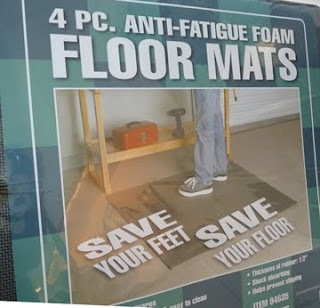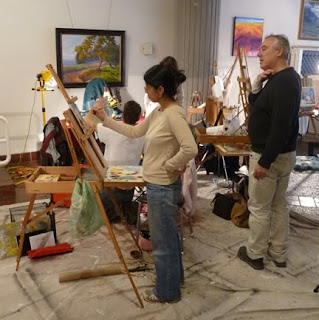- Carlson's Guide to Landscape Painting by John F. Carlson
- The Art Spirit by Robert Henri
- Hawthorne on Painting by Mrs. Charles W. Hawthorne
Are these books the ones you refer to in your art practice? Do you have others you recommend?
 something new to try in the studio
something new to try in the studioMy eye doctor did a bang up job dilating my pupils for my eye exam today. Six hours later my vision is still blurred and it's hard to tell that my eyes are green for all of the black pupils. Even with the blurry vision, I started a new oil painting to put into practice and remind myself again of some of the things from the Still Life workshop I took over the weekend. Big shapes with the right values first. Tomorrow I'll look again and see if I need much detail to finish it. Starts are a lot of fun!















































